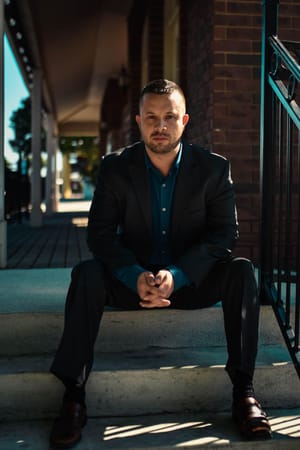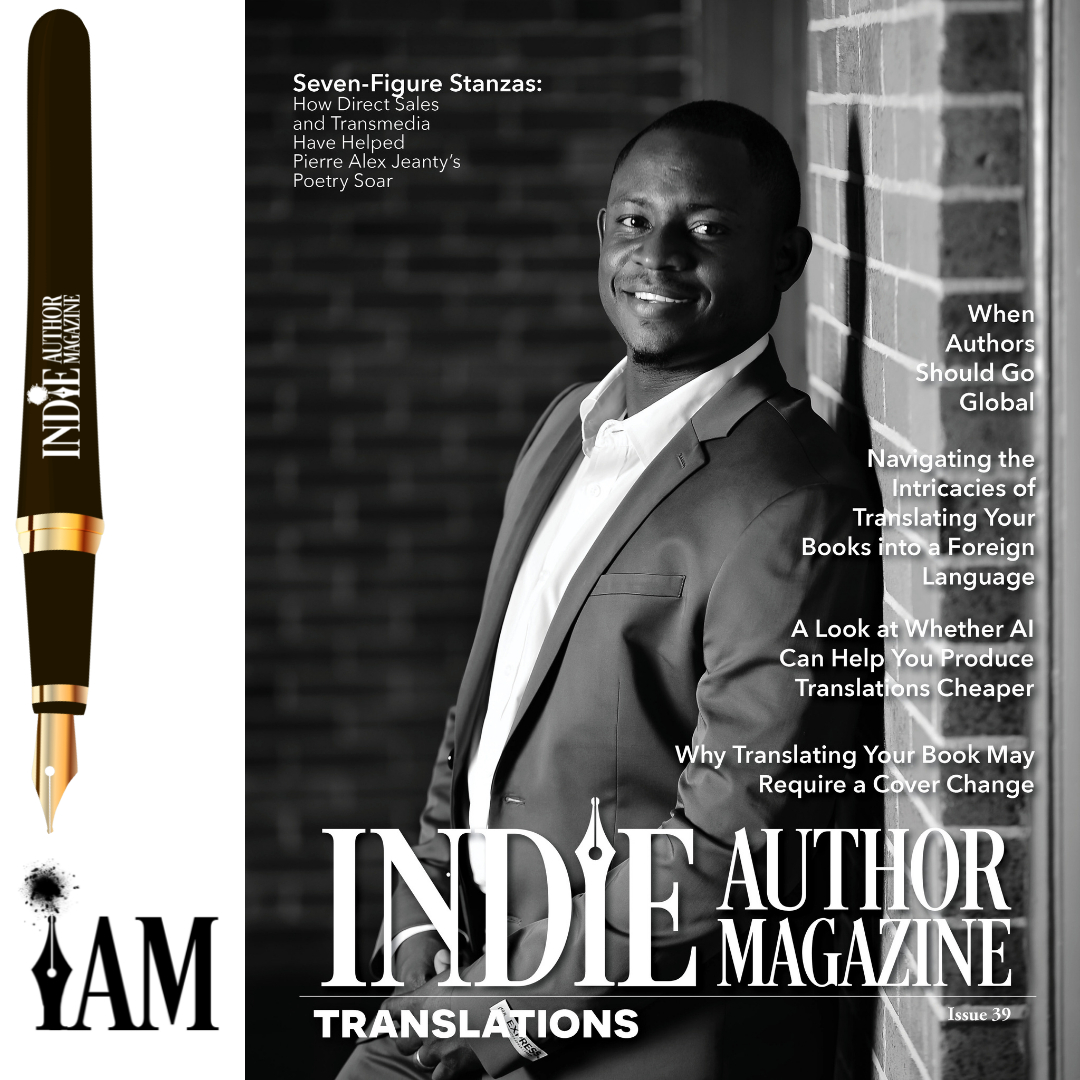How Direct Sales and Transmedia Have Helped Pierre Alex Jeanty’s Poetry Soar
David Viergutz
Thought-provoking poetry can speak to readers around the world. It’s something people have seemingly always innately understood about the art form, and it’s a fact Pierre Alex Jeanty has witnessed firsthand as he’s helped his readers gain inspiration and strength to love and grow. But the impact of Pierre’s poetry has gone beyond his readers. Over the past ten years, he has transformed the idea behind those books—to love yourself and what you do—into a full-fledged business model for authors to emulate in order to take their business to new heights.
A bestselling, multi-seven-figure author of poetry who specializes in selling his books directly to readers, Pierre is also the owner of 7 Figure Book Business, helping authors through courses and accelerators to leave behind the idea of “authorpreneurship” and instead drive their focus toward building a sustainable business. Pierre also operates a Facebook Ads agency for authors and a warehousing and distribution service for authors embracing direct sales.
Pierre started his career as an influencer, having built an audience on social media at the time to the tune of fifty thousand followers on Instagram, five hundred thousand followers on X—then called Twitter—and one hundred thousand on Facebook. His brand was called “Gentlemenhood” and offered online advice to men. Then his following started asking him to write a book. He wrote his first book in 2014 and started with one hundred preorders.
By the end of the month, he had sold five hundred copies.
From there, he started writing poetry online using social media, which allowed him to appeal to a wider audience and build his poetry brand from scratch. Now, his business has grown to over two hundred thousand customers on his list and millions of followers across his various social media channels. He has an author website built for e-commerce and has become his own Amazon storefront. He drives all traffic to his website from social media and ads, and now, he has the customer data he needs to make wise business decisions.
A Market-Aware Mindset
Pierre largely attributes his success to knowing how to build an audience before he published his first book. As he started advertising, he made sure to write in a way that worked with Facebook’s 20 percent text rule. This rule, expunged in 2021, said that for an ad to be approved on the platform, the ad image couldn’t consist of more than 20 percent text. Pierre’s ads for his poetry books fit perfectly within the rule’s guidelines, and he was able to write books that were easy to market within Facebook’s ecosystem because of this deliberate formatting.
When asked about the lessons he learned in the process of building his business, he says at first, he didn’t realize he was an indie author. “I was a marketer who knew how to grow on social media,” he says. “I knew how to listen to my audience, and I want others to adopt the business mindset I had at the beginning.” Pierre’s mindset is counterintuitive to a lot of common teachings in the indie author ecosystem. He focuses on building an audience outside of Amazon, focusing on the customer journey and implementing traditional business practices that don’t fuel the algorithm but rather fuel his business.
“Everything is becoming more competitive. Things aren’t lasting outside of individual communities where there is no control,” he says. “Platforms are changing faster, and if you don’t have control, you’ll fall behind.”
Pierre’s thoughts on connecting with readers go beyond email marketing. Instead, he utilizes social media and user-generated content (UGC) to sell his books. “People sell to people, not just through ads, and if you want control of that, then show your face. TikTok set a standard for non-advertising appearance. People want to meet real people. That’s why livestreams work so well—because you’re speaking directly to readers.”
Speaking directly to readers, stepping out from behind the computer, and becoming the face of your business might sound terrifying for some, but for Pierre, it’s led to a business model that is more hands-on than most and a daily routine he enjoys. He spends a lot of time focused on building his business and less on writing, but that also means his writing is more focused and purposeful. He has a small team that helps him manage, package, and ship books for himself and other authors he works with.
A Brand Built on Readers
In a digital-first world, plenty of indie authors focus their energy on e-books and audiobooks before turning to print. Pierre’s focus is on print books and product boxes containing T-shirts and other branded merchandise. He has an office like most, but his business is largely hands-off—besides managing his Facebook ads. Customers purchase a book directly from his website, built on Shopify, and his warehouse receives the order and fulfills it. Customer service has also been turned over to his team, and he prefers to delegate tasks to his employees with the help of standard operating procedures and workflows, such as how to pack and order.
He says his focus on products such as workbooks and T-shirts are complementary to his books and allow him to act as a brand builder.
“Harry Potter is a good example [of this],” he says. “Big brands used to be the only ones capable of merchandising, but now, you can build a community who support the products because they have a connection to the story that sells the product.”
Authors and other business owners can source merchandise in small enough batches that it is economic, and the financial risk is a lot less, Pierre says. But this direct-first model may not be for everybody. Pierre’s focus is on building a brand presence tied to his products and being a direct line between his brand and his customers.
Pierre suggests direct sales are for authors who are looking at the long-term results of building a business, which counters the traditional Amazon model focused on digital sales. “Print is a massive market, and customers experience excitement when they get their books in the mail,” he says. But it can also differ by genre. “If a book appeals to a larger market and the author adopts a business mindset first, they can sell their story. Selling direct can work in the extremes, niche or super broad, because the customers are easier to target.”
Pierre says authors, especially new authors, should think of their books as products first. Authors shouldn’t write without a goal and instead should remember the consumer and go into it looking to sell products and merchandise. A book without the audience in mind is a passion project, he says, but a book written for an audience is a product.
To find out what an audience wants, Pierre has a solution.
“Survey your audience,” he says. “Write about their struggles and what it feels like to be them. Pull from your experience and answer questions for the audience in your books.”
A Changing Landscape
Over time, Pierre’s business has transformed to the point his struggles are also different. He said in the beginning, he focused on growth and scale while maintaining communication with his audience. Now, his troubles are less author related as more business responsibilities arise and he sets his eyes on a new goal: $4 million in sales for the year. Pierre said his personal goals have also changed. He doesn’t write everyday anymore, and instead he focuses on the joys of owning a business, working with his team, and teaching and helping other authors grow.
The landscape of publishing is changing, and Pierre is but one of many authors who have considered how direct sales can fit into their publishing model. “Owning your community and selling your own products is the new creator economy,” Pierre says. His focus on building a community, writing for the reader, and owning your audience is sound advice for new and seasoned authors alike.
David Viergutz


